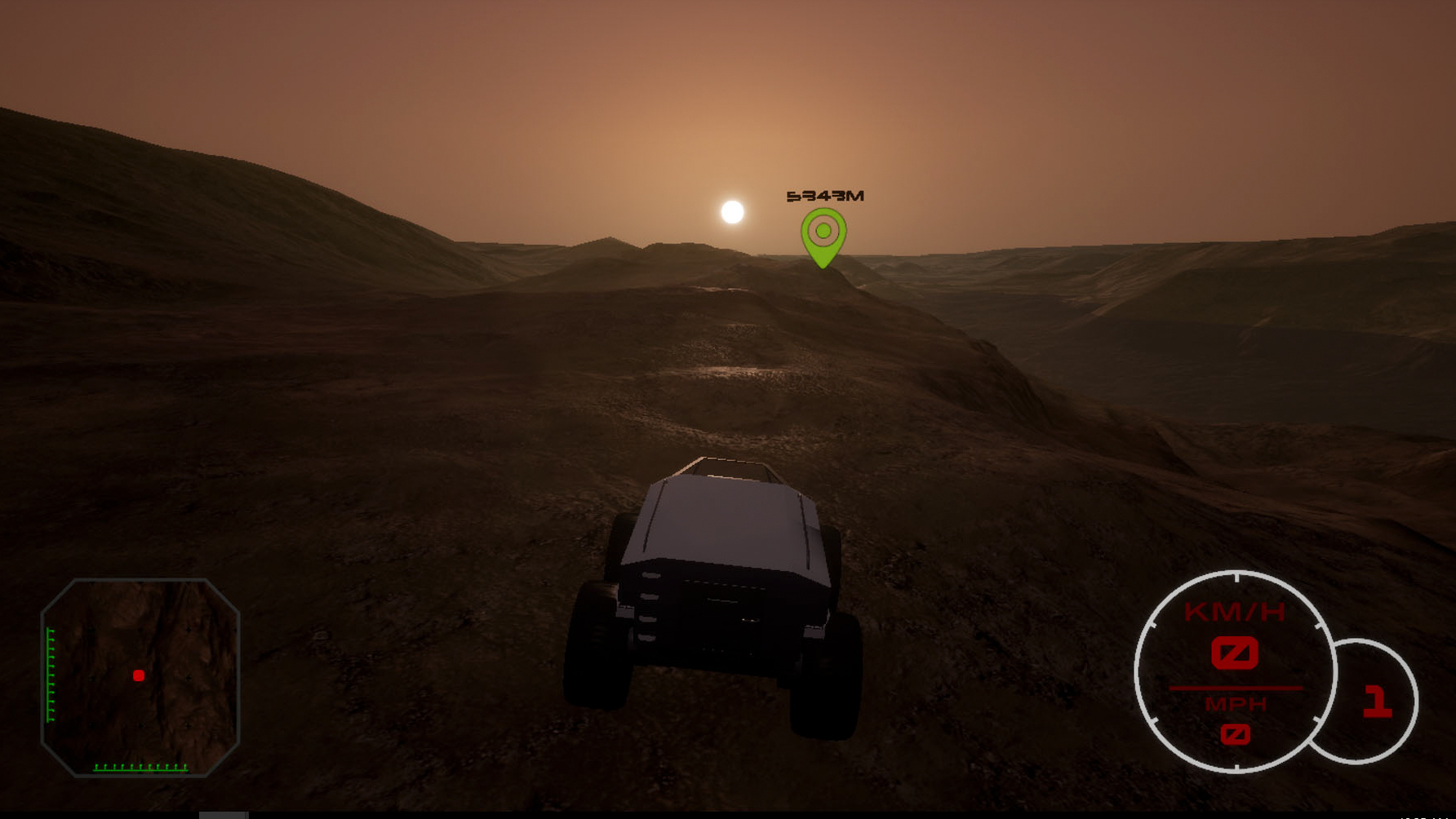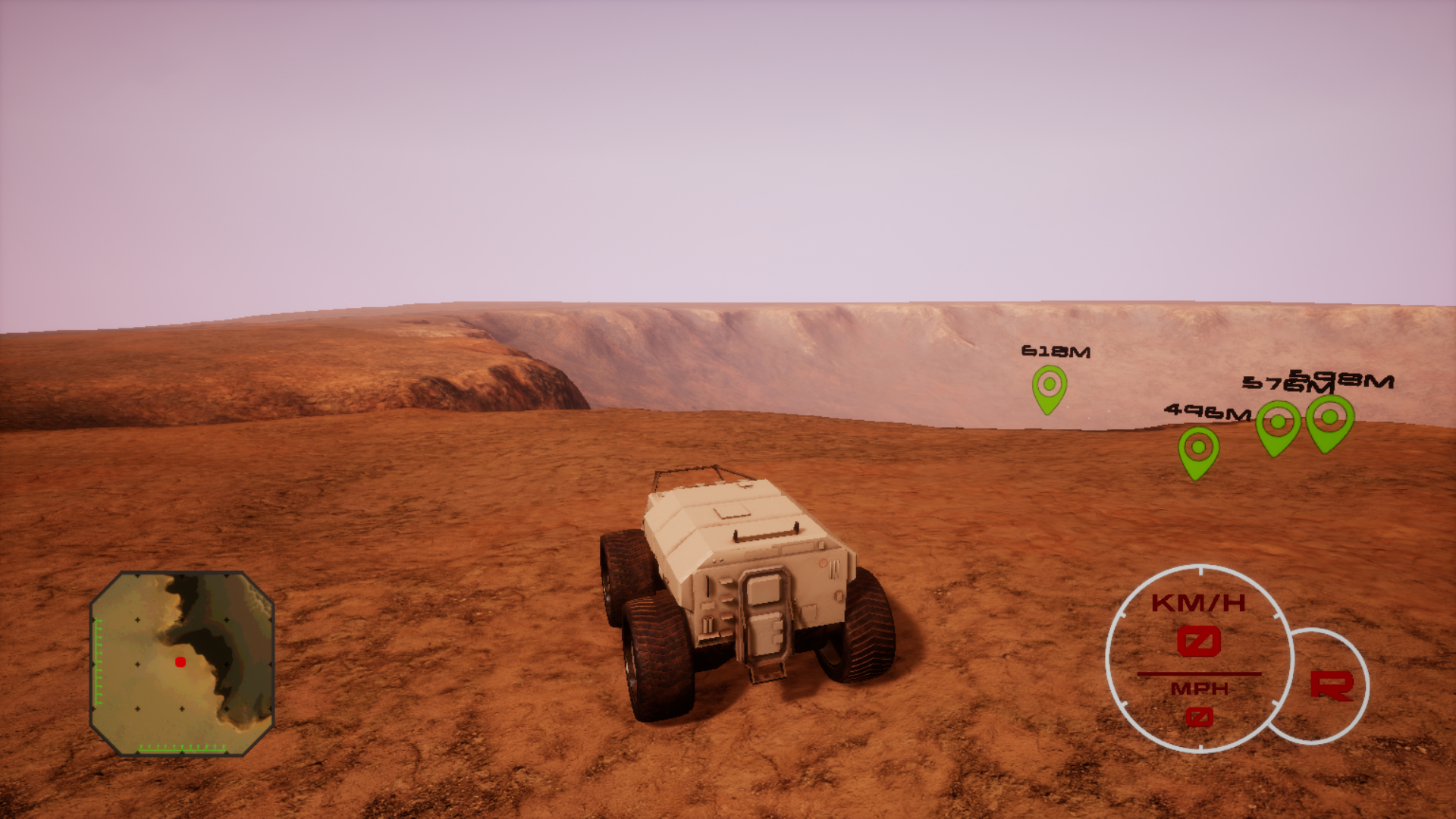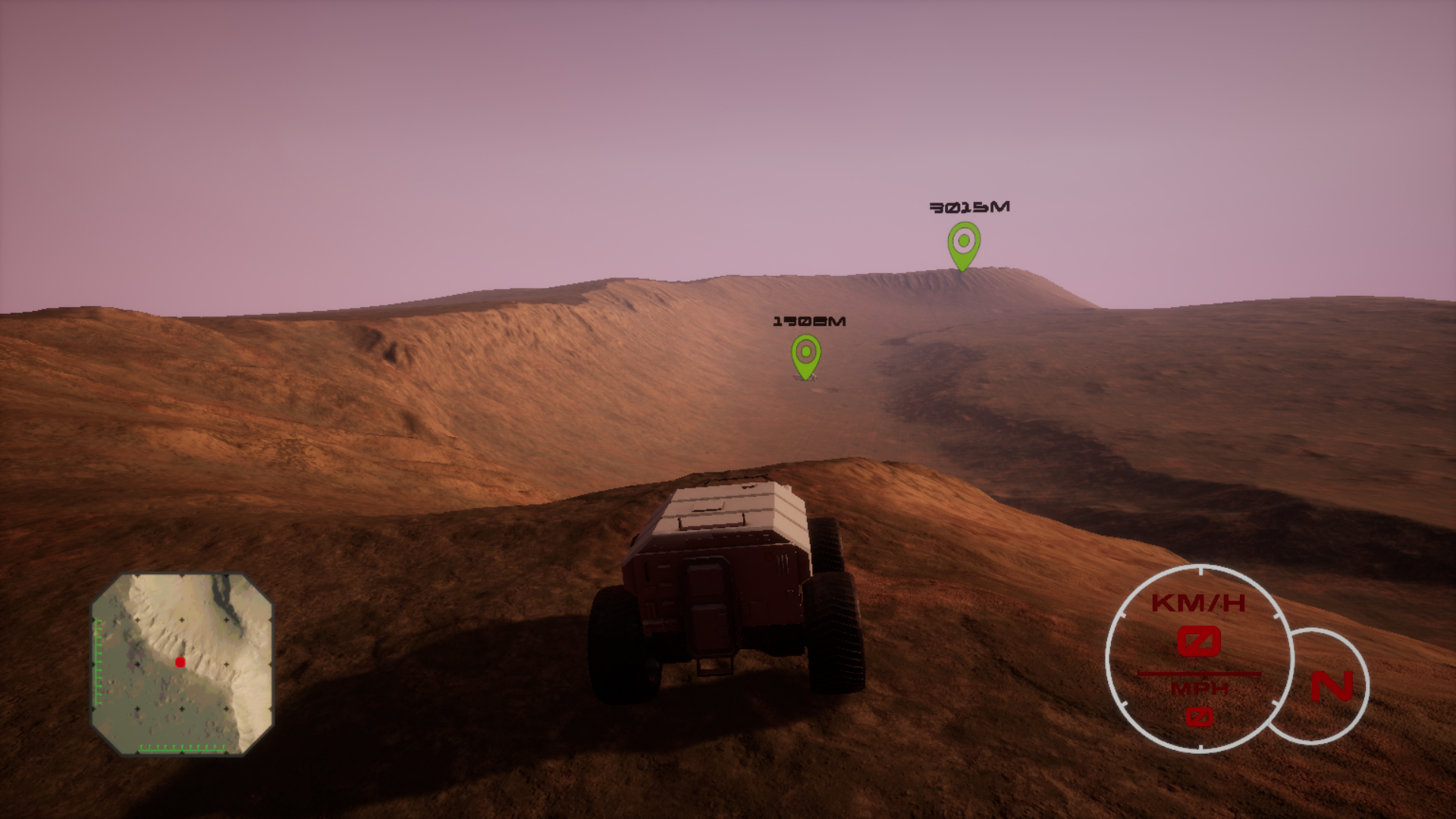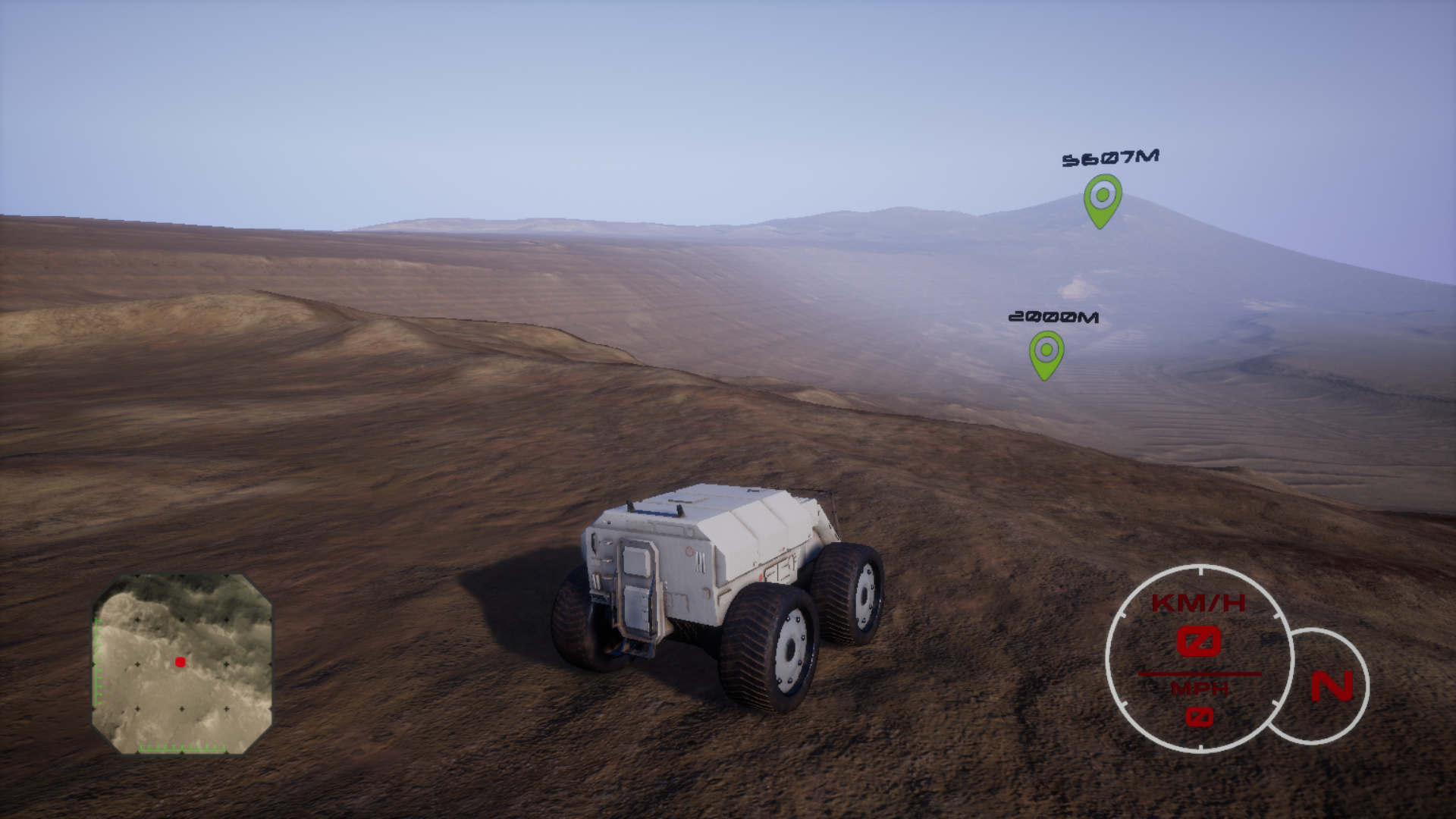During the festive holiday season in 2016, Alan Chan spent his week’s vacation time off work exploring Mars. As most of us did last minute Christmas shopping, ate turkey, and reminded ourselves of why discussing politics with dad is a bad idea, Chan was romping, carefree, over Mars’ ruddy surface in a rover-style space buggy. Not a bad time to get away from Earth, as it so happens!
“You look at satellite data and you just don’t have a sense of scale, right?” Chan told Digital Trends. “You think, like, ‘here are some mountains,’ but you don’t get a sense of what it would actually feel like if you were standing there. It’s like going up in an airplane. All the towns you’ve been to and the roads you drive around suddenly look completely different. [Being on the surface] totally changes your perception.”
Flat images could be made 3D and run through the Unreal engine to turn it into an explorable experience.
Before we get any further we should note that, no, you haven’t somehow missed out on the greatest homebrew rocketry story of all time. If you feel like you saw something about a solo Mars explorer on TV at some point in the past, you’re almost certainly remembering Matt Damon’s character from The Martian.
Chan — a video game cinematics creator from California — wasn’t physically on Mars. Instead, he was exploring the Red Planet through a hacked-together home project in which he took satellite and terrain data from the HiRISE (High Resolution Imaging Science Experiment) camera on NASA’s Mars Reconnaissance Orbiter, and transformed it into a photorealistic virtual recreation of the martian landscape
“This data was available online for scientific purposes,” he continued. “What I did was to take that information and reformat it so I could put it into a game engine.” With some neat triangulation software, flat images could be transformed into three-dimensions and run through the Unreal engine to turn it into an explorable experience. “I don’t think anyone else had done it before,” he said.
The results are something that, until Elon Musk and others finally get their act together, lets users explore the sights of Mars — from the enormous Victoria Crater to Candor Chasma, one of the largest canyons in the planet’s Valles Marineris canyon system. You can even play it in full immersive virtual reality, courtesy of an Oculus Rift headset.
Less game, more data visualization
Ultimately, Red Rover isn’t really a game. There are no mission objectives, no evil aliens lurking behind rocks to be mowed down, and no way to die. What it is is an impressive demonstration of cutting edge data visualization; the way that creators can take advantage of the amazing space data being produced by organizations like NASA and turn it into something that’s approachable and understandable to the rest of us.
“I would love to visualize flying through the Great Red Spot on Jupiter but I don’t have enough data to do it just yet.”
It’s not wholly accurate, Chan acknowledged. The Martian buggy itself is, by his own admission, ridiculously overpowered. He also took a few liberties with the ambient wind noises, which are there to make it more immersive, but are probably more than you would actually hear in real life. However, the biggest bit of dramatic license involved creating textures to flesh out the extra detail needed for the planet.
Despite being the most high-resolution footage we’ve yet got of Mars, Chan notes that it still only equates to one pixel per half meter. That means that, uploaded with total fidelity, the surfaces look horribly stretched close up.
To counteract this, he replaced them with new texture data of sand, dirt and rocks to make it look better. (“You can actually disable that in the ‘options’ menu so you can see the data as it was actually taken,” he noted. If you’re more scientifically oriented you might want to do that.”)
In the future, Chan would like to extend the project to other planets, whenever the data is available. “I would love to visualize flying through the Great Red Spot on Jupiter but I don’t have enough data to do it just yet,” he said.
Mars remains the main focus, though. With that in mind, the title will continue evolving as more and more HiRISE data is beamed back to Earth.

In his Steam notes for the “game”, Chan — who is in late forties — notes that he grew up believing that we would have colonized Mars by this point. To date, we have not, which is why Red Rover may be your best chance to explore the planet.
At $4.99 on Steam, compared with the billions spent by space agencies, it’s almost certainly the cheapest.
Editors' Recommendations
- NASA is operating its Mars Curiosity rover from workers’ home offices
- NASA’s Perseverance rover almost ready for its trip to Mars
- NASA reveals 9 finalists in Mars 2020 rover naming contest. Cast your vote
- NASA’s Mars 2020 rover passes first driving test with flying colors
- NASA’s Mars 2020 rover practices its crucial descent separation










